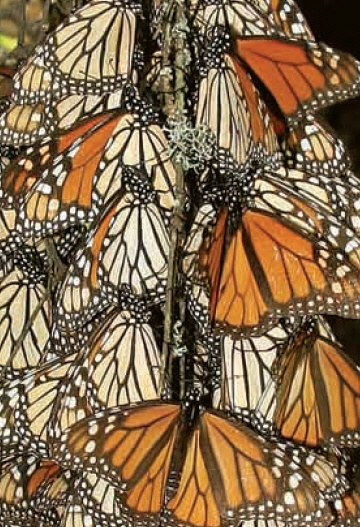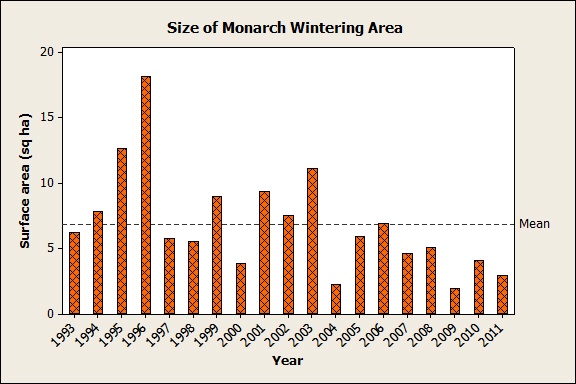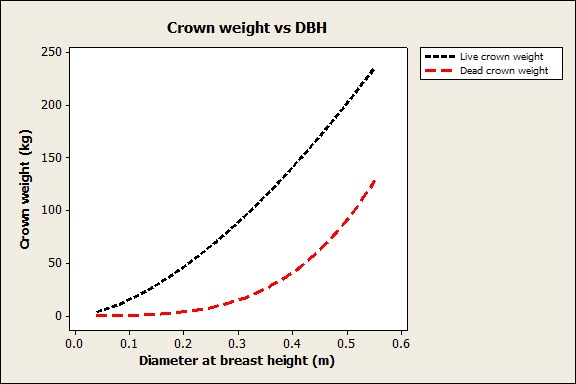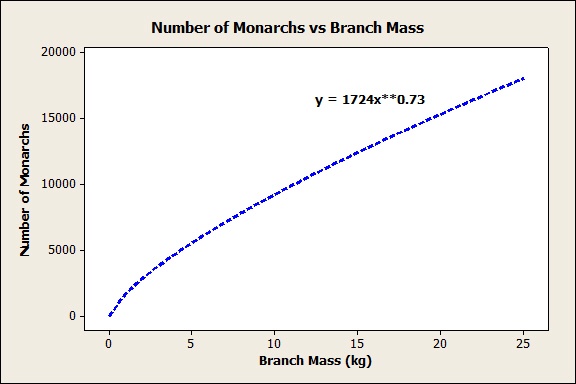If you walk along an open field in central Pennsylvania in September, blaze orange is often the first sign of approaching fall you'll see. And it happens before the leaves even begin to turn color.
The annual migration of millions of monarch butterflies in North America is one of the great wonders of nature. Every autumn, these delicate beauties flutter from as far north as Canada to their wintering site in central Mexico—a journey that can cover over 2,800 miles!
Although the peak season for the eastern monarch migration is over in this area, my friend and I did see a straggler heading south just last weekend. "Vaya con Dios!" we bid the butterfly—the archaic Spanish expression seemed apt for such a long, miraculous journey. If you live farther south in the U.S. or in northeastern Mexico, myriads of monarchs may be passing your way right now.
How Many Monarchs Are There?
The migration of the monarch is even more amazing when you consider the dangers they confront. Besides natural predators and inclement weather, the butterflies face growing threats from expanding urban development, stronger agricultural pesticides, and increasing deforestation. To assess the potential impact of these threats, it's critical to monitor the monarch population. Unfortunately, that's easier said than done.
Scientists have long been grappling with how to count them. You'd think their task would be made easier by the groupy nature of the monarchs, who conveniently congregate in colonies over the winter in the transvolcanic region of Mexico. But apparently the butterflies are so densely clustered over the trees and the ground that they appear almost as a single organism. They're virtually uncountable!
Estimating Population by Area
"Mark, release, and recapture" is one approach researchers use to count the monarchs. But it's very tedious and time-consuming. For even a small colony, it may require at least a half dozen researchers marking more than 10,000 butterflies over a period of several weeks. It's also disruptive for the butterflies.
An easier, less invasive approach is to measure the total area of the colonies that the monarchs inhabit each winter, as shown in the Minitab bar chart below:

Source: Rendon-Salinas E, Valera-Bermejo A, Rodriguez-Mejia S, Martinez-Pacheco A, Vidal-Pinzon O. Overwintering
of the monarch butterfly in Mexico.
This rough estimate has many limitations—it doesn't consider the density of the butterflies on the land area, for one thing. Still, it's the only estimate for the total colony size of wintering monarchs that's been consistently collected over the years—and the recent downward trend has many experts concerned.
Estimating Butterfly Population with Forestry Metrics
Maybe it's because I enjoy mathematics and hiking so much, but for whatever reason, some of my favorite statistical applications are methods of estimation in the field of forestry. I think it's pretty cool that you can estimate the average weight of the crown (branches and leaves) of trees in a forest using only a cloth tape measure.
For example, regression analysis has shown that the weight of the crown of a grand fir tree is, on average, exponentially related to its diameter at breast height (dbh). The regression equations are graphed on this Minitab scatterplot:

The R-squared value for each model is approximately 0.95, which means the diameter of the trunk at breast height (dbh) explains about 95% of the variation in the dry crown weight of the fir tree!
Monarch researcher Bill Calvert cleverly utilized this relationship to estimate the population of a monarch colony. First, he randomly sampled Oyamel firs—the main hangout of the wintering monarchs—within a colony. (The dbh of a tree is easily calculated by measuring the circumference of the trunk 1.4 m from the ground and dividing by pi). After determining the average dbh (0.31 meters), he used the regression models to estimate the average total dry crown weight of the Oyamel firs (≈110 kg) and then adjusted for moisture content.
Once he knew the average crown weight, Calvert sampled branches from firs in the colony, counted the number of monarchs on each branch (they don't move in the cold), and weighed each branch. That data allowed him to regress estimated monarch counts against branch weights, ending up with this model (R-squared of 0.725).

You see where this is going? Divide average crown weight by average branch weight to get the average number of branches per tree. Multiply the average number of branches per tree by the average number of monarchs per branch, to get the average number of monarchs per tree. This estimate assumes the tree is fully occupied with monarchs, so multiply it by the estimated percentage of the tree crown covered in monarchs. (If I were doing all this, I'd definitely use the Minitab Calculator to assign formulas to worksheet columns!)
Finally, estimate the number of trees in the colony (using handy-dandy forestry metrics, again) and voila, you've got an estimate for the total number of monarch butterflies in the tree branches of the entire colony. For the colony Calvert studied, the estimated total number of monarchs in tree crowns came in at 24,961,256!
Since I'm not sure if you're still with me or if you're thinking about migrating to another Web page, I'll spare you the estimation methods Calvert used to calculate the number of monarchs on the trunks of the trees (using the formula for the surface area of the frustum of a cone! Geometry teachers, rejoice!!).
Anyway, it's nice to see statistics used to help safeguard the world around us. For me, these methods of estimation have an elegance and beauty that's almost as pleasing as the lovely monarch butterfly itself.
Source: W.H. Calvert. Two methods estimating overwintering monarch population size in Mexico. In The Monarch Butterfly: Biology and Conservation. KS Oberhauser, MJ Solensky.



